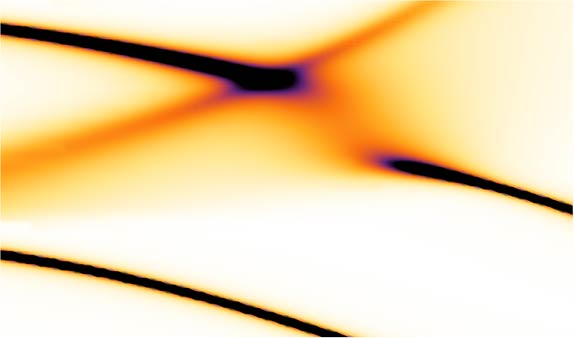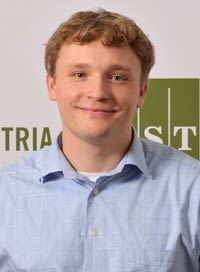May 20, 2015
Quantum rotors in a quantum bath
Mikhail Lemeshko introduces new quasiparticle • “Angulon” describes transfer of angular momentum in a quantum many-body system

Rotation and angular momentum are ubiquitous concepts in physics, and play a role in such diverse areas as the reactivity of biological molecules, accuracy of atomic clocks or spectra of stars. In a paper appearing in the leading physics journal Physical Review Letters on May 19, 2015, Mikhail Lemeshko, Professor at the Institute of Science and Technology Austria (IST Austria) and Richard Schmidt, Postdoc at Harvard University, develop the first general theory describing the effect of a quantum many-body environment on the rotation of quantum particles.
During the last 70 years, the quantum theory of angular momentum evolved into a powerful machinery, commonly used to describe isolated quantum systems. In realistic experiments, however, quantum systems are seldom isolated. Instead, they are disturbed by the surrounding environment, the quantum bath – be it a gas, a solution, or fluctuations of the electromagnetic field. Such an environment may profoundly change the physics of the system and can hardly be controlled experimentally. In particular, the properties related to rotation become tremendously complex even when only a few particles interact.

In their paper, Richard Schmidt and Mikhail Lemeshko introduce a new quasiparticle, the “angulon”, as an efficient description of rotation in the context of many-particle systems. A “quasiparticle” is a mathematical concept that allows physicists to explain the collective behavior of strongly-interacting particles as an almost free motion of non-interacting quasiparticles. The newly presented “angulon” consists of a quantum rotor dressed by a quantum many-body field, and is characterized by the total angular momentum of the many-particle system. Studying the angulon’s properties paves the way to understanding the redistribution of angular momentum between impurities and a crystal lattice in solid state physics, as well as between molecules and a solution in chemically relevant processes.



